Our verdict
- Top pick in best Adidas running shoes
Pros
- Keeps losing weight
- Midfoot-friendly geometry
- More Lightstrike Pro!
- Breathable upper
- Redesigned heel counter improves lockdown
- Outsole grips well and lasts forever
- Stellar value for a supertrainer
- Ideal for tempo workouts
Cons
- Narrow heel limits stability
- Pointy toebox restricts toe splay
- Still too much Lightstrike 2.0?
Audience verdict
- Top 13% in road running shoes
- Top 19% in Adidas running shoes
Comparison
The most similar running shoes compared
+ + Add a shoe | |||||
|---|---|---|---|---|---|
| Audience score | 90 Superb! | 90 Superb! | 85 Good! | 92 Superb! | |
| Price | $160 | $260 | $180 | $250 | |
| Pace | CompetitionTempo | Competition | Tempo | Competition | |
| Arch support | Neutral | Neutral | Neutral | Neutral | |
| Weight lab Weight brand | 9 oz / 254g 9 oz / 255g | 5.9 oz / 166g 6.5 oz / 184g | 9.8 oz / 278g 9.8 oz / 278g | 7.3 oz / 208g 7.4 oz / 210g | |
| Lightweight | ✗ | ✓ | ✗ | ✓ | |
| Drop lab Drop brand | 6.0 mm 6.0 mm | 8.6 mm 6.0 mm | 7.3 mm 6.0 mm | 8.1 mm 8.0 mm | |
| Strike pattern | Mid/forefoot | HeelMid/forefoot | Mid/forefoot | HeelMid/forefoot | |
| Size | True to size | True to size | True to size | True to size | |
| Midsole softness | Balanced | Soft | Soft | Firm | |
| Difference in midsole softness in cold | Normal | Small | Normal | Small | |
| Toebox durability | Decent | Good | Bad | - | |
| Heel padding durability | Good | Decent | Good | - | |
| Outsole durability | Good | Bad | Decent | - | |
| Breathability | Moderate | Moderate | Moderate | Breathable | |
| Width / fit | Medium | Narrow | Medium | Narrow | |
| Toebox width | Narrow | Medium | Medium | - | |
| Stiffness | Moderate | Stiff | Stiff | Stiff | |
| Torsional rigidity | Stiff | Stiff | Stiff | Stiff | |
| Heel counter stiffness | Stiff | Flexible | Moderate | Flexible | |
| Plate | Carbon plate | Carbon plate | Carbon plate | Carbon plate | |
| Rocker | ✓ | ✗ | ✓ | ✓ | |
| Heel lab Heel brand | 34.3 mm 36.0 mm | 34.1 mm 35.0 mm | 36.8 mm 41.0 mm | 33.3 mm 39.0 mm | |
| Forefoot lab Forefoot brand | 28.3 mm 30.0 mm | 25.5 mm 29.0 mm | 29.5 mm 35.0 mm | 25.2 mm 31.0 mm | |
| Widths available | NormalWide | Normal | NormalWide | NormalWide | |
| Orthotic friendly | ✓ | ✓ | ✓ | ✗ | |
| Season | All seasons | All seasons | All seasons | SummerAll seasons | |
| Removable insole | ✓ | ✓ | ✓ | ✗ | |
| Ranking | #39 Top 11% | #85 Top 24% | #210 Bottom 42% | #18 Top 5% | |
| Popularity | #207 Bottom 43% | #33 Top 9% | #40 Top 11% | #190 Bottom 48% |
Who should buy
After testing the Adizero Boston 13 to its limits, we can recommend it for:
- All runners who enjoyed the Boston 12! It’s a similar ride with a lighter build, better upper, and improved comfort.
- Midfoot and forefoot strikers needing a stiff shoe that works wonders for tempo runs and the occasional race.
- Fans of Adidas supershoes looking for a solid training partner that won’t empty their wallets.
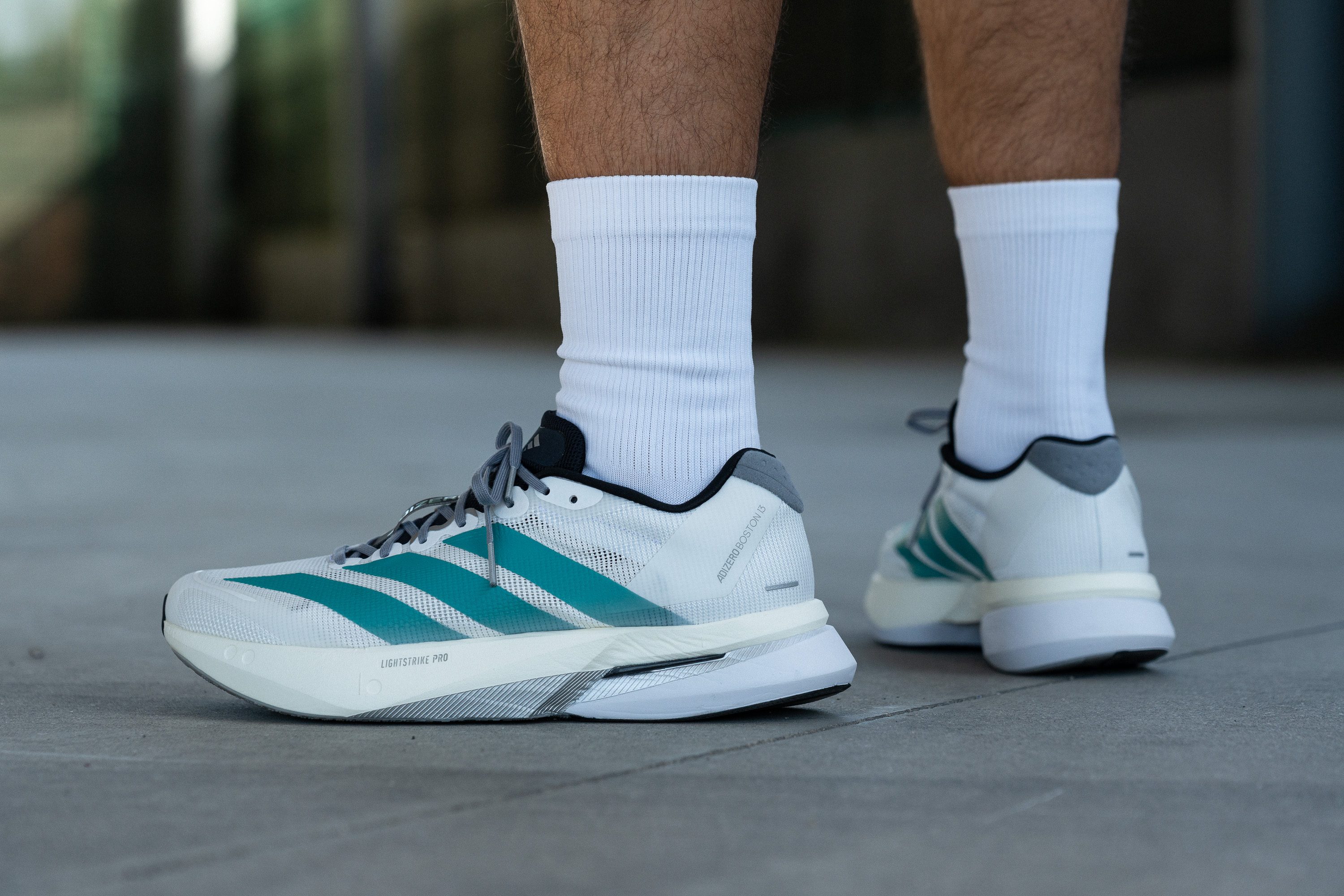
Who should NOT buy
The carbon-based Energy Rods 2.0 make this shoe stiff, and definitely not for runners who dislike that rigid, plate-like feel. A better option might be the Adizero EVO SL, which features a full Lightstrike Pro midsole, offers more flexibility, and even comes at a lower price.
We also believe heel strikers looking for extra rearfoot stability won’t enjoy the Boston 13. In that case, we’d recommend supertrainers with a broader base like the ASICS Superblast 2 or Mizuno Neo Vista.
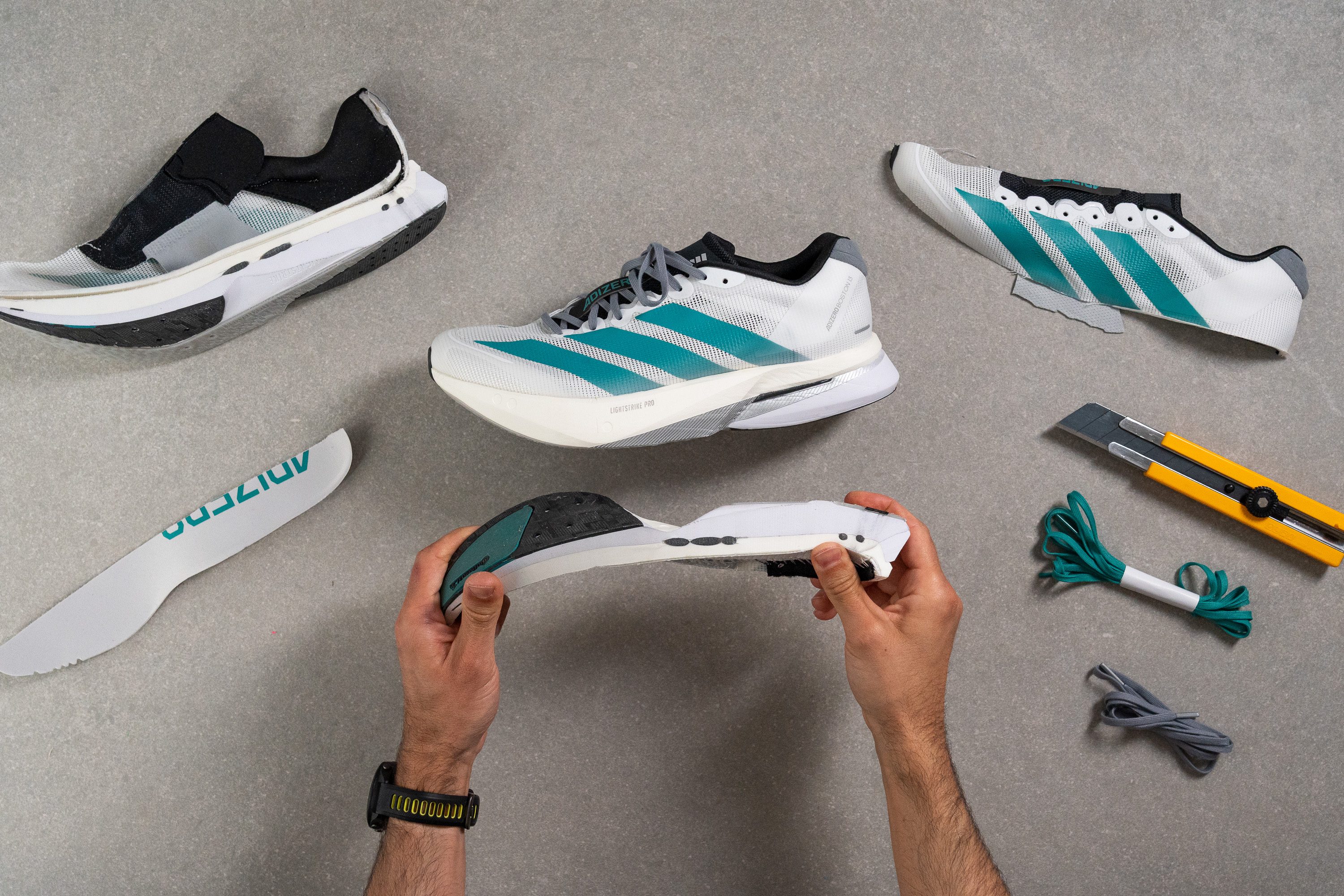
Lastly, the tapered toebox may cause discomfort on long runs. The Nike Zoom Fly 6 and the On Cloudmonster Hyper offer more room for your toes.
Cushioning
Shock absorption
We tested the Boston 13 using the ASTM F1976 standard and recorded 126 SA in shock absorption—a number that aligns perfectly with what we’d expect from a versatile running shoe, although heavier runners may find it a bit lacking for long runs.

| Adizero Boston 13 | 127 SA |
| Average | 129 SA |
Energy return
One of the biggest upgrades in this version is the added Lightstrike Pro—though it’s only in the forefoot. That’s why we found 63.4% of energy return in the heel, but a noticeable bump up front to 69.7%. Now it's closer than ever to supershoe territory for forefoot strikers, though it’s still not quite there.
| Adizero Boston 13 | 63.4% |
| Average | 58.6% |
Heel stack
The Adizero Boston 13 likely fits the supertrainer label with its high-end foam and carbon Energy Rods, though some might say the 34.3 mm heel height is too short for that club. Still, there’s no rulebook, so we’re placing it right alongside models like the ASICS Magic Speed 4.
Meanwhile, it's refreshing to see this setup wrapped in a non-maximalist build that leans toward more traditional stack heights from the past.
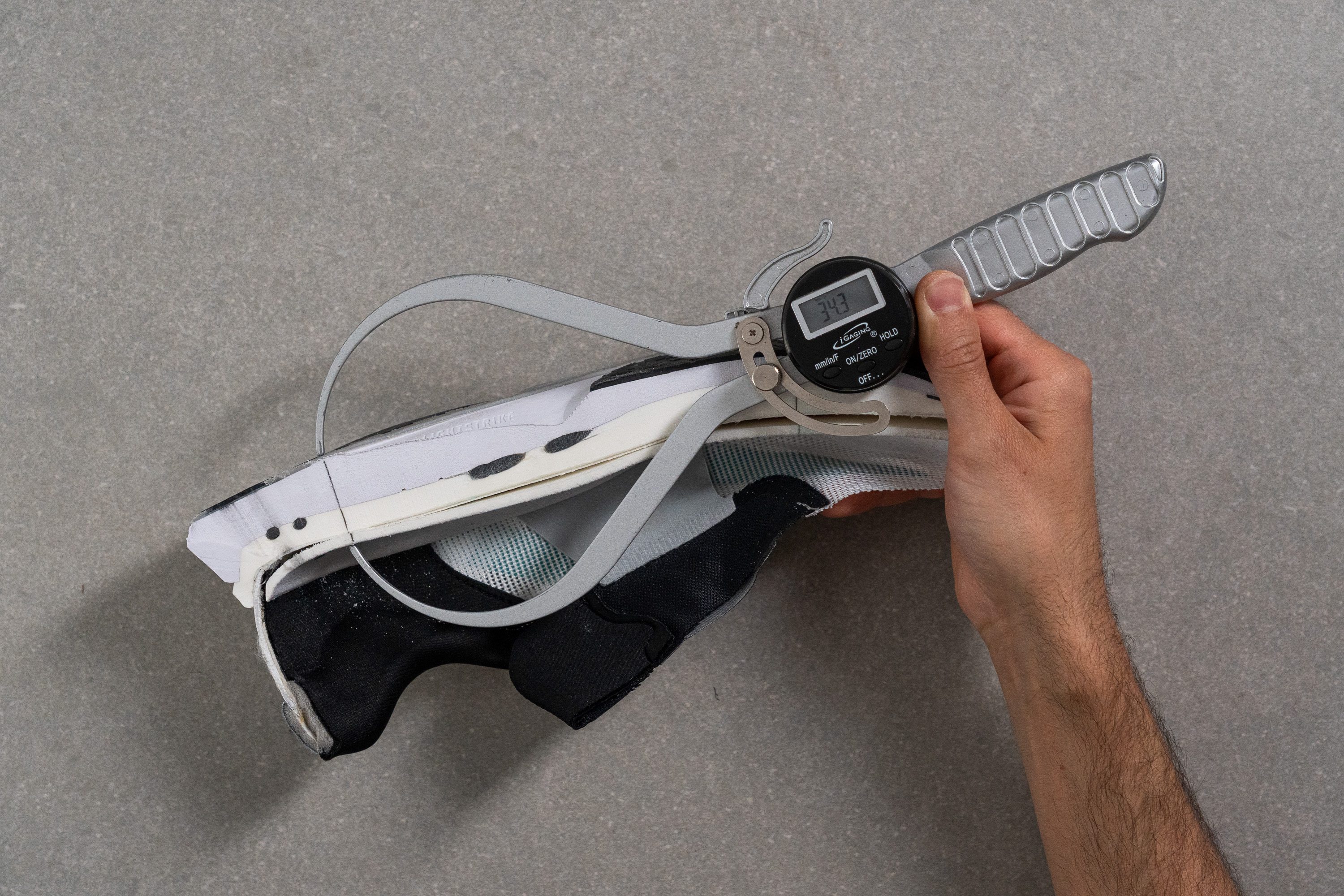
| Adizero Boston 13 | 34.3 mm |
| Average | 34.8 mm |
Forefoot stack
While the heel feels fairly average, the forefoot stands out with a plush 28.3 mm of foam—more than what we find in most running shoes. That’s why we believe the Boston 13 can easily handle long runs too!
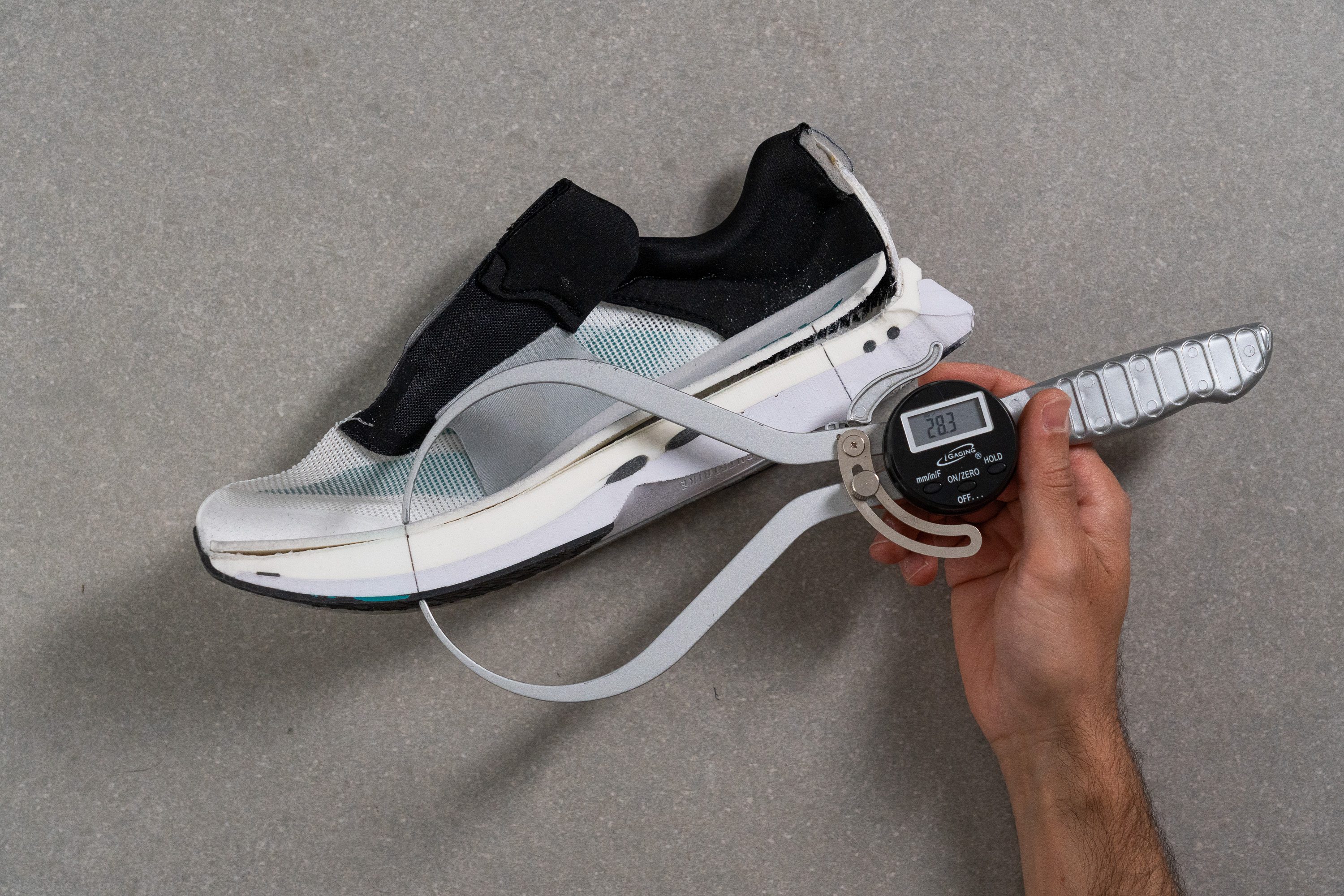
| Adizero Boston 13 | 28.3 mm |
| Average | 26.1 mm |
Drop
The Adizero Boston 13 is one of the rare shoes we’ve tested where the brand’s claimed drop actually aligns with our lab measurements. With a 6 mm offset, it’s a standout choice for midfoot and forefoot strikers. Heel strikers can still use it, but due to other design aspects we'll disclose pretty soon, we wouldn’t recommend it as their top pick.
We also want to take this chance with the sliced shoe photo to highlight the dual-foam setup and the amount of Lightstrike Pro inside. It mirrors the Adizero Boston 12 combo—Lightstrike Pro on top, Lightstrike 2.0 below, with more LSP in the forefoot and less in the heel. Adidas also states there’s exactly 13.8% more Lightstrike Pro than before, which is a welcome upgrade!

| Adizero Boston 13 | 6.0 mm |
| Average | 8.6 mm |
Midsole softness
The first layer of foam that we analyzed in the Boston 13 is Lightstrike 2.0—the one that hits the ground first. It's the same firm compound (23.0 HA) used in the previous version, designed to enhance stability and increase durability.
Adidas placed more of it in the heel, while the forefoot gets just a slim layer under the superfoam.
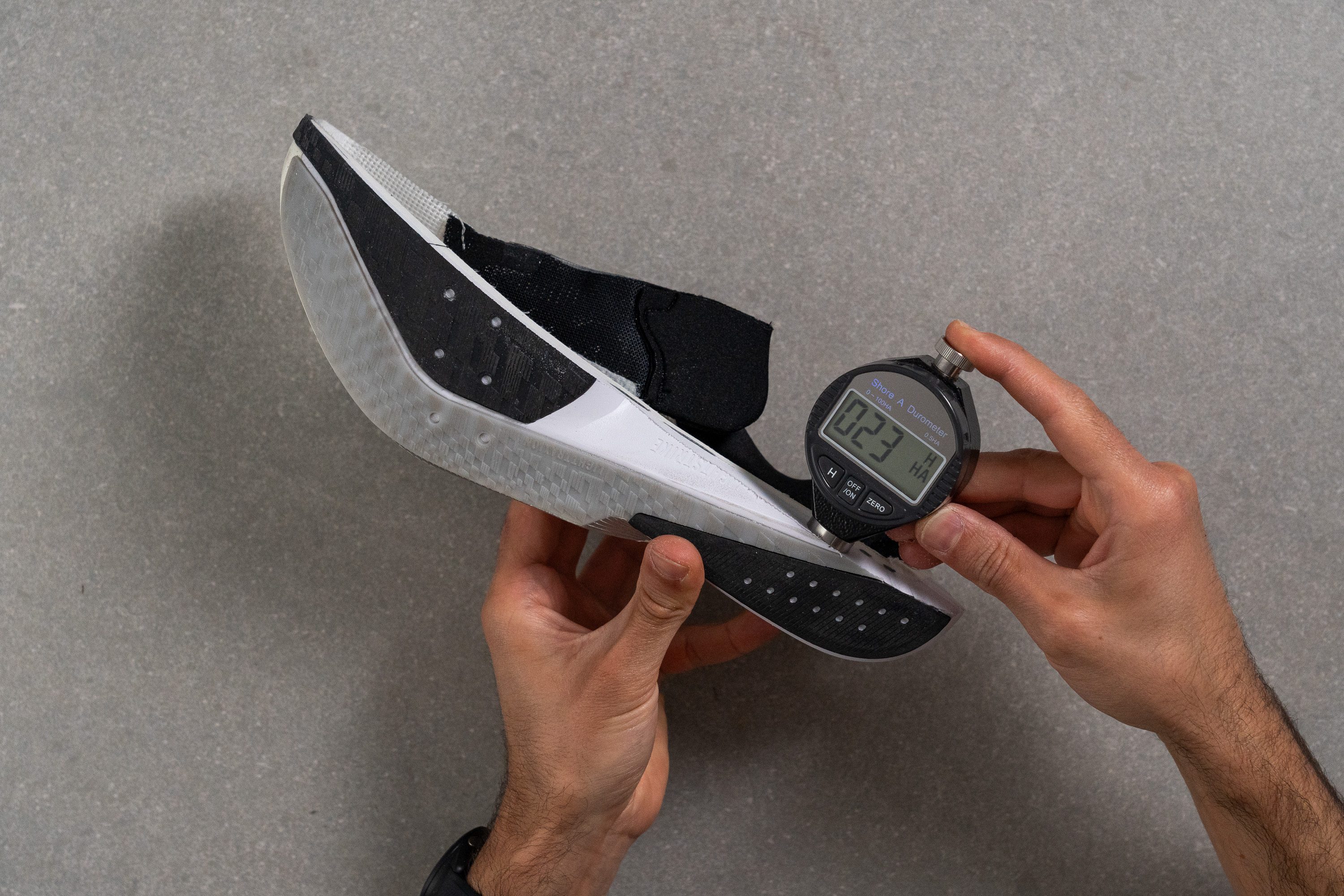
| Adizero Boston 13 | 23.0 HA |
| Average | 20.4 HA |
Secondary foam softness
The foam sitting above the carbon-based Energy Rods is the familiar Lightstrike Pro superfoam—a well-known compound known for its energy return and long-lasting build.

This layer is much softer than Lightstrike 2.0, scoring just 14.5 HA on our durometer. As a result, the ride feels nicely balanced—neither overly soft nor too firm.

To confirm the material, we checked it under the microscope and discovered the updated supercritical TPEE formulation also used in the Adios Pro 4. This marks a shift from the Boston 12, which featured the older version found in the Adios Pro 3.

| Adizero Boston 13 | 14.5 HA |
| Average | 22.6 HA |
Rocker
We also discovered that the ride of the Boston 13 feels less aggressive than the Adios Pro 4, thanks to a more moderate forefoot rocker.
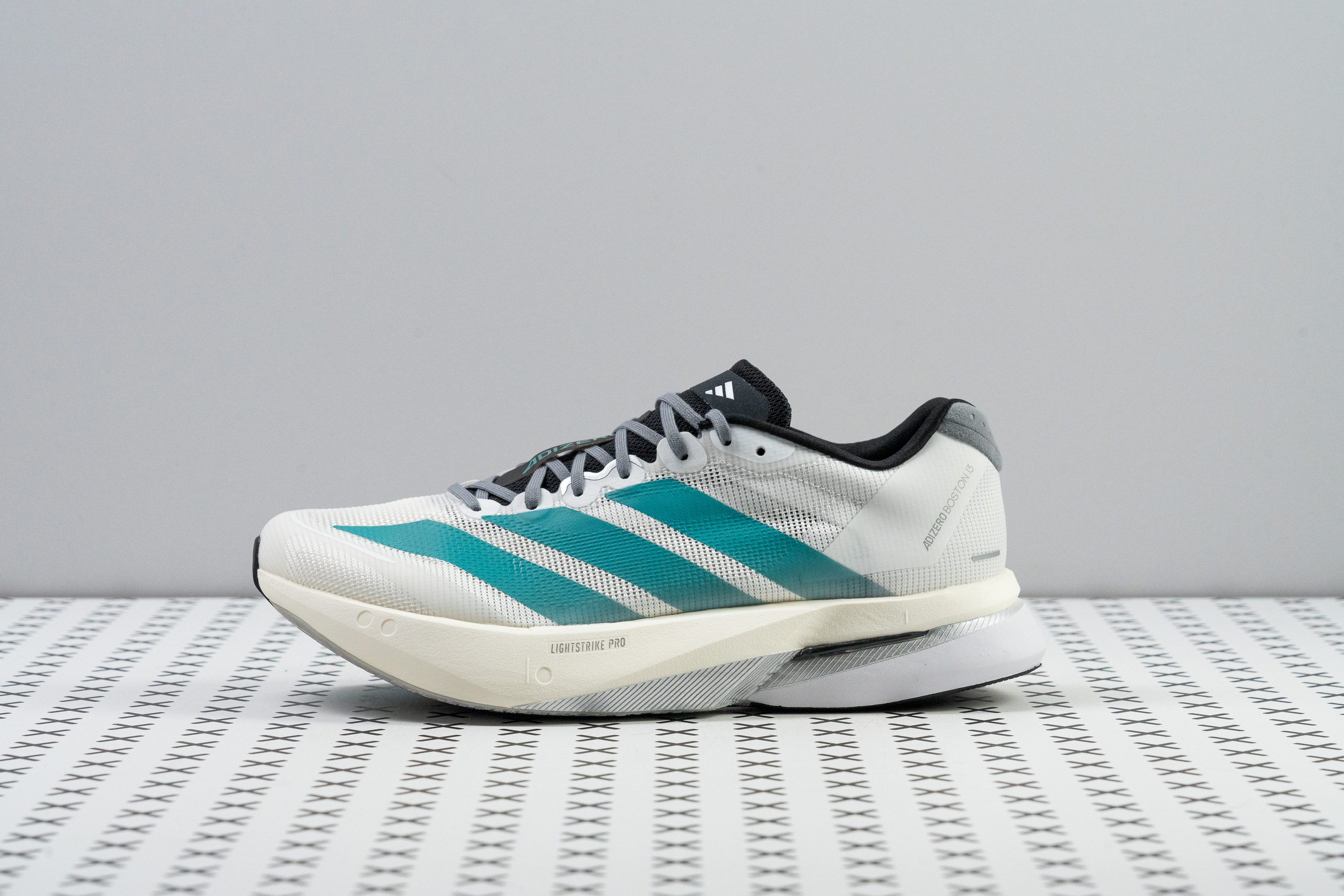
This setup works better for runners seeking a training-friendly shoe or a more forgiving racing option if they're not lightning-fast. The heel also has a gentle curve, though nothing overly dramatic.

Plate
As with most shoes in the Adizero line, Adidas keeps using its Energy Rods 2.0 instead of a carbon plate. The ride feels a bit different with the rods, but the end result is the same—added stiffness and a faster shoe that excels when hitting the accelerator.
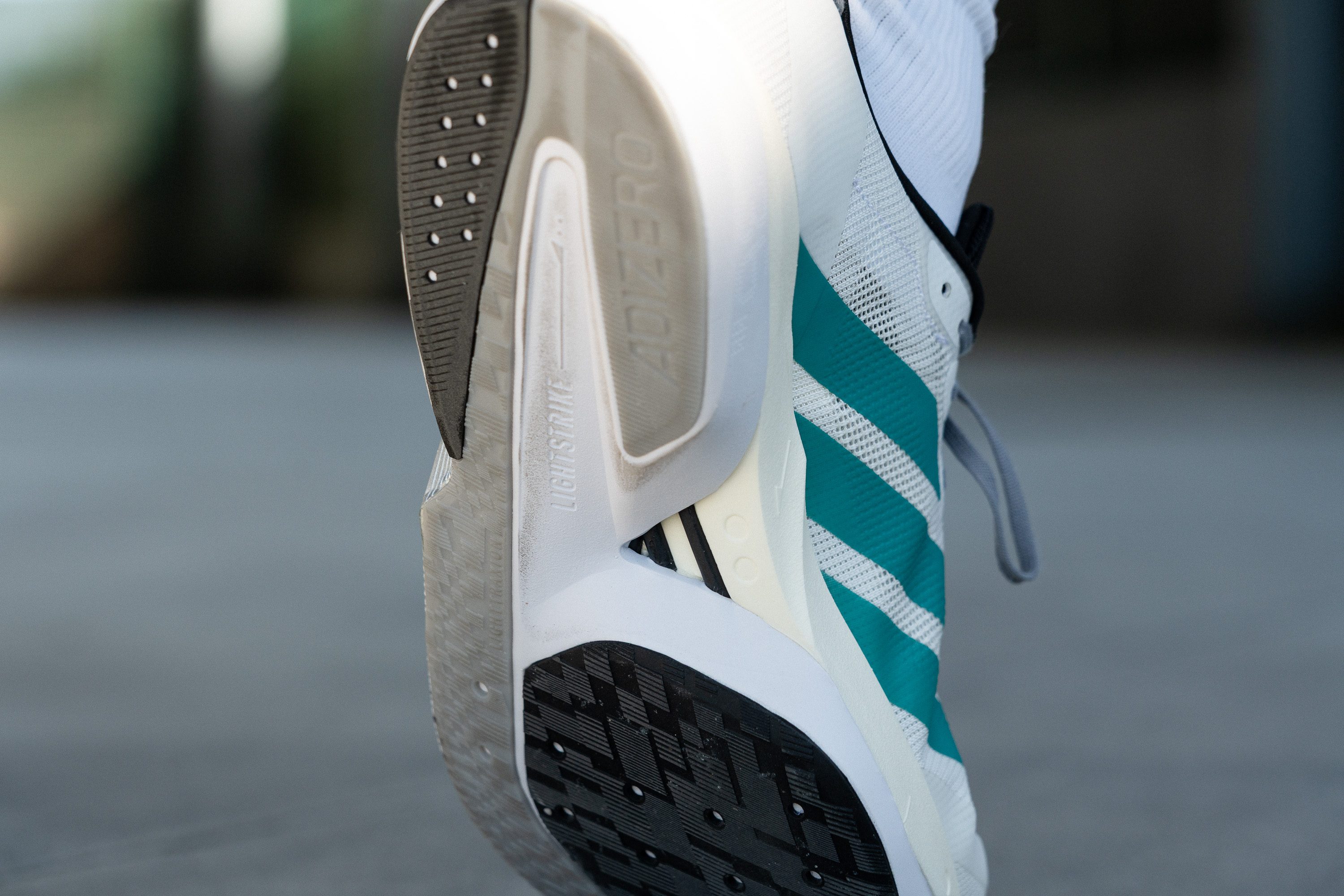
Size and fit
Size
Adidas Adizero Boston 13 fits true to size (157 votes).
Width / Fit
One of the things many appreciated in the Boston 12 was its roomy fit, but we felt this version a bit different.
We tested it using our custom-made gel mold. The good news is that width still leans wide-friendly at 97.3 mm, which offers some extra space for broad-footed runners. But there's more to it...

| Adizero Boston 13 | 97.3 mm |
| Average | 95.1 mm |
Toebox width
The Boston 13 tapers noticeably more than the v12.
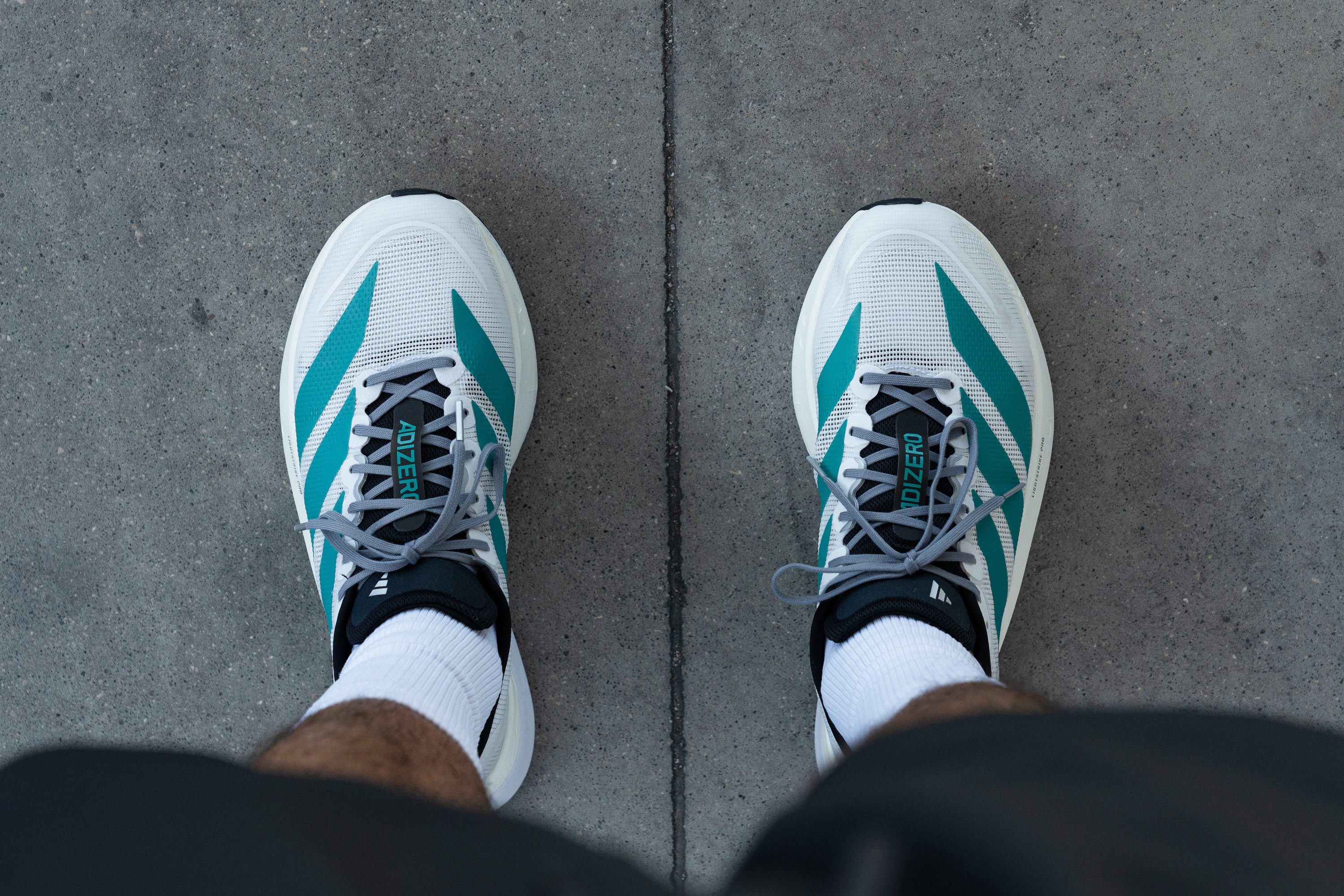
Our lab measurements showed 70.6 mm here, compared to the previous 73.2 mm. This change creates a snugger, race-ready toebox that some may like, but it does reduce the toe-splay-friendly comfort the earlier version offered.
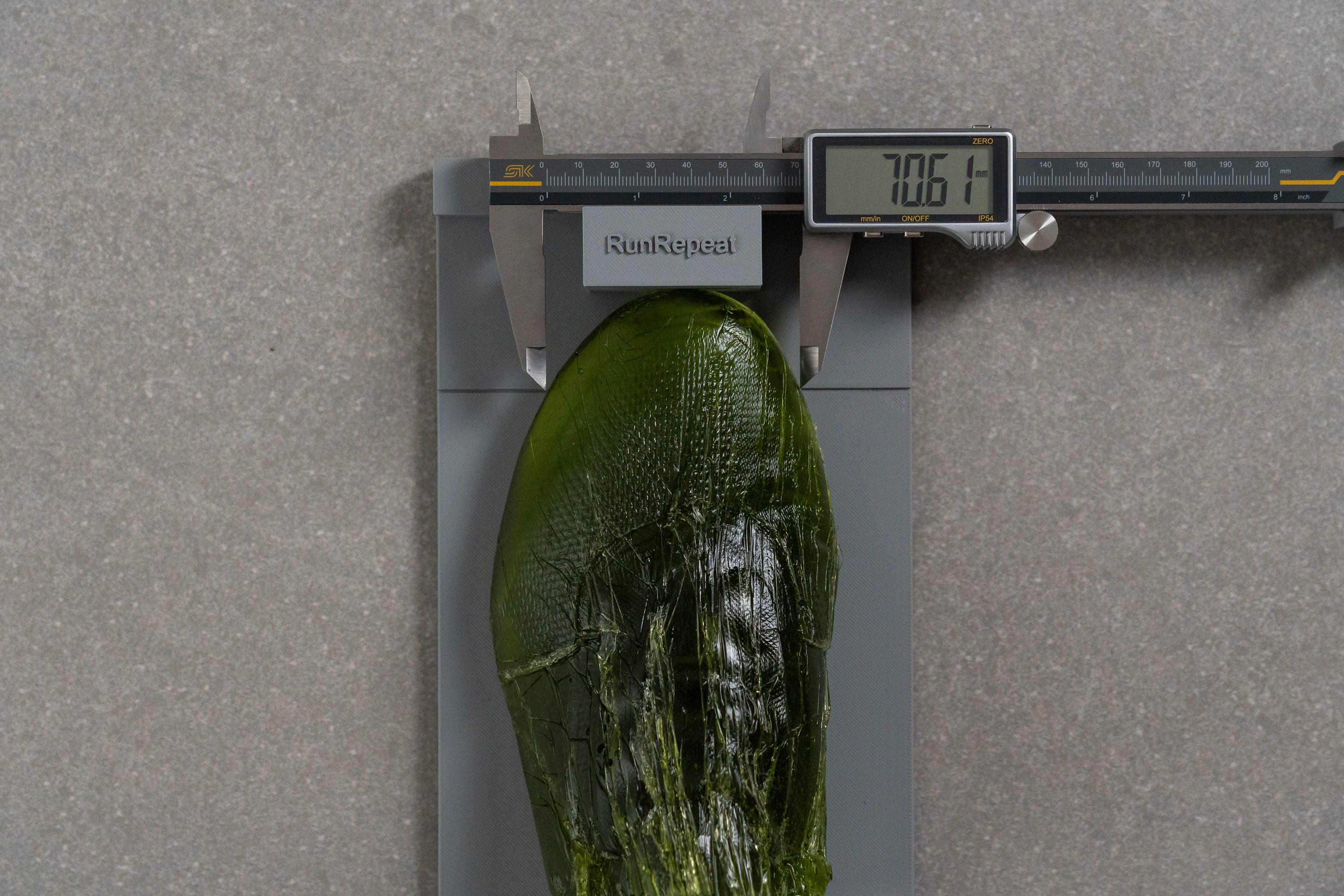
| Adizero Boston 13 | 70.6 mm |
| Average | 73.3 mm |
Toebox height
We also checked vertical clearance and found 28.3 mm.
That's an ideal measurement for a shoe that needs to offer comfort for longer distances.

| Adizero Boston 13 | 28.3 mm |
| Average | 27.1 mm |
Traction / Grip
Traction test
The Adizero Boston 13 has reduced its use of Continental rubber to cut weight, but that didn’t have much impact on traction. We recorded a solid 0.47 score, enough for confident grip on both wet pavement and dry dirt roads.
| Adizero Boston 13 | 0.47 |
| Average | 0.47 |
Outsole design
The outsole of the Adizero Boston 13 uses partial rubber coverage, with a small patch of Continental rubber strategically placed on the forefoot. A central cutout exposes the foam to trim weight, and there's also Adidas’ new LIGHTTRAXXION rubber—first introduced in the Adios Pro 4 and now making its way across the Adizero series.
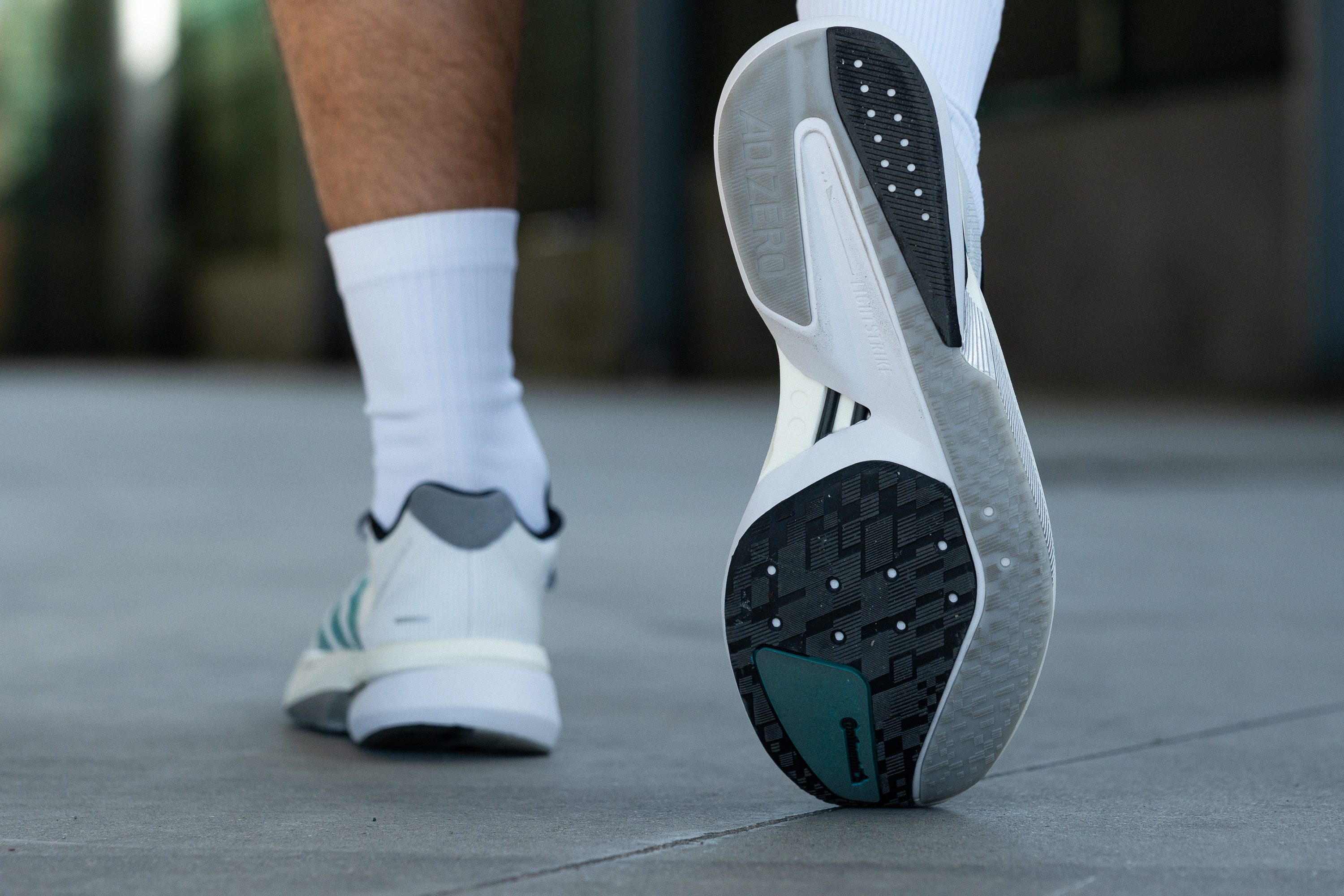
Flexibility / Stiffness
One of the things we discovered in the lab is that Adidas' carbon-based Energy Rods are less rigid than full carbon plates, and the Boston 13 confirmed that with an average-like 15.4N score in our 30-degree bend test.
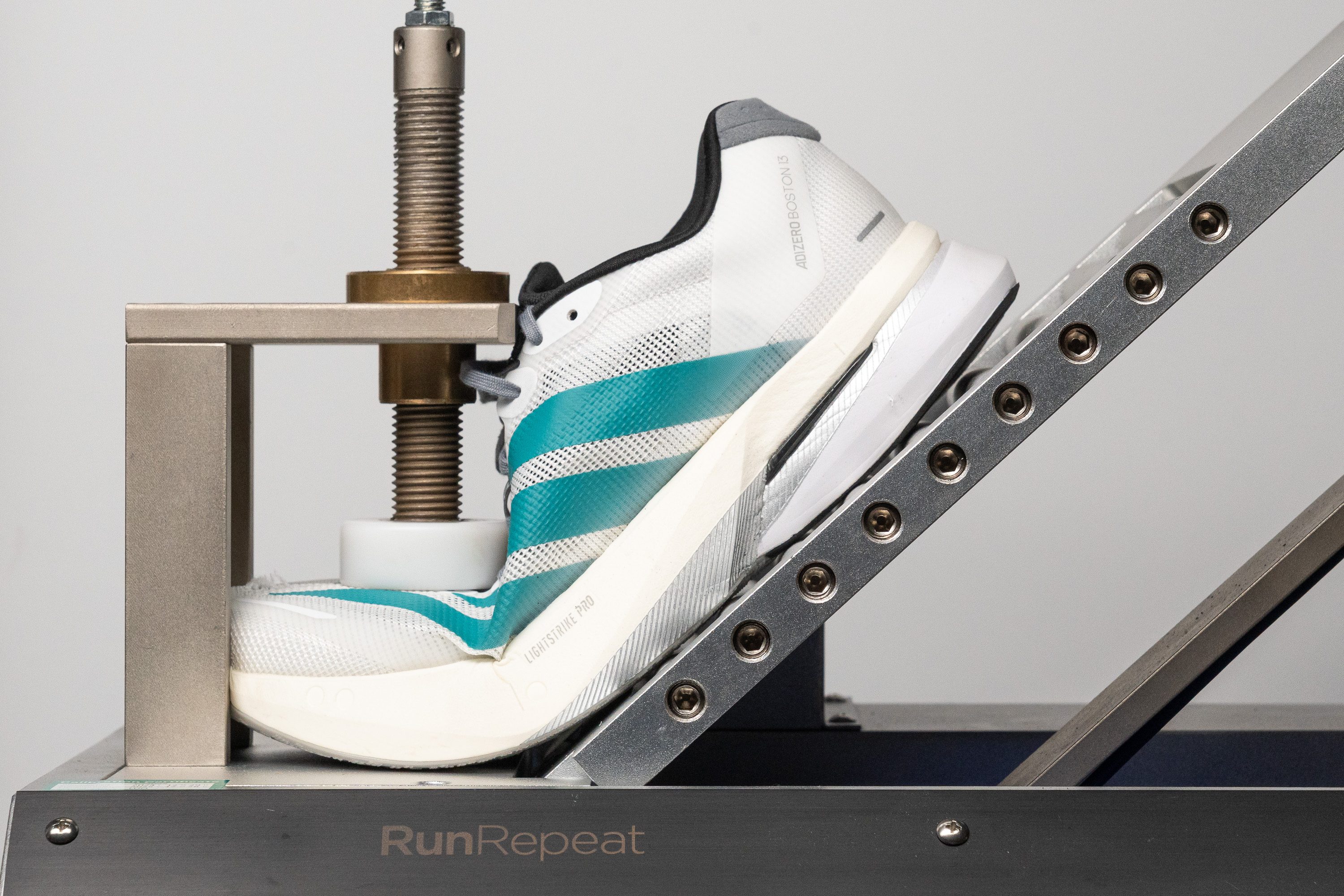
| Adizero Boston 13 | 15.4N |
| Average | 15.2N |
Weight
Adidas keeps trimming weight from the Boston series, and while dropping from 9.2 oz or 261g to 9.0 oz or 254g won’t make headlines, it’s still progress—and a solid figure for a shoe with generous midsole, solid outsole coverage and a more comfortable heel counter.

| Adizero Boston 13 | 9.0 oz (254g) |
| Average | 9.3 oz (265g) |
Breathability
Adidas doesn’t have the best reputation when it comes to upper comfort in the Adizero lineup, and the Boston 13 sticks to that familiar playbook. Still, the breathability looked promising right out of the box, so we were eager to test it in the lab.
We ran our airflow test and were happy to record a 4 out of 5. That’s a solid result—good enough for all seasons, whether you’re hitting frosty roads or melting pavement. What caught our eye, though, is that Adidas pulled this off without using oversized ventilation holes.
To investigate further, we moved the upper over our LED light. There weren’t any major gaps to explain the airflow performance, and that left us wondering how they achieved this...
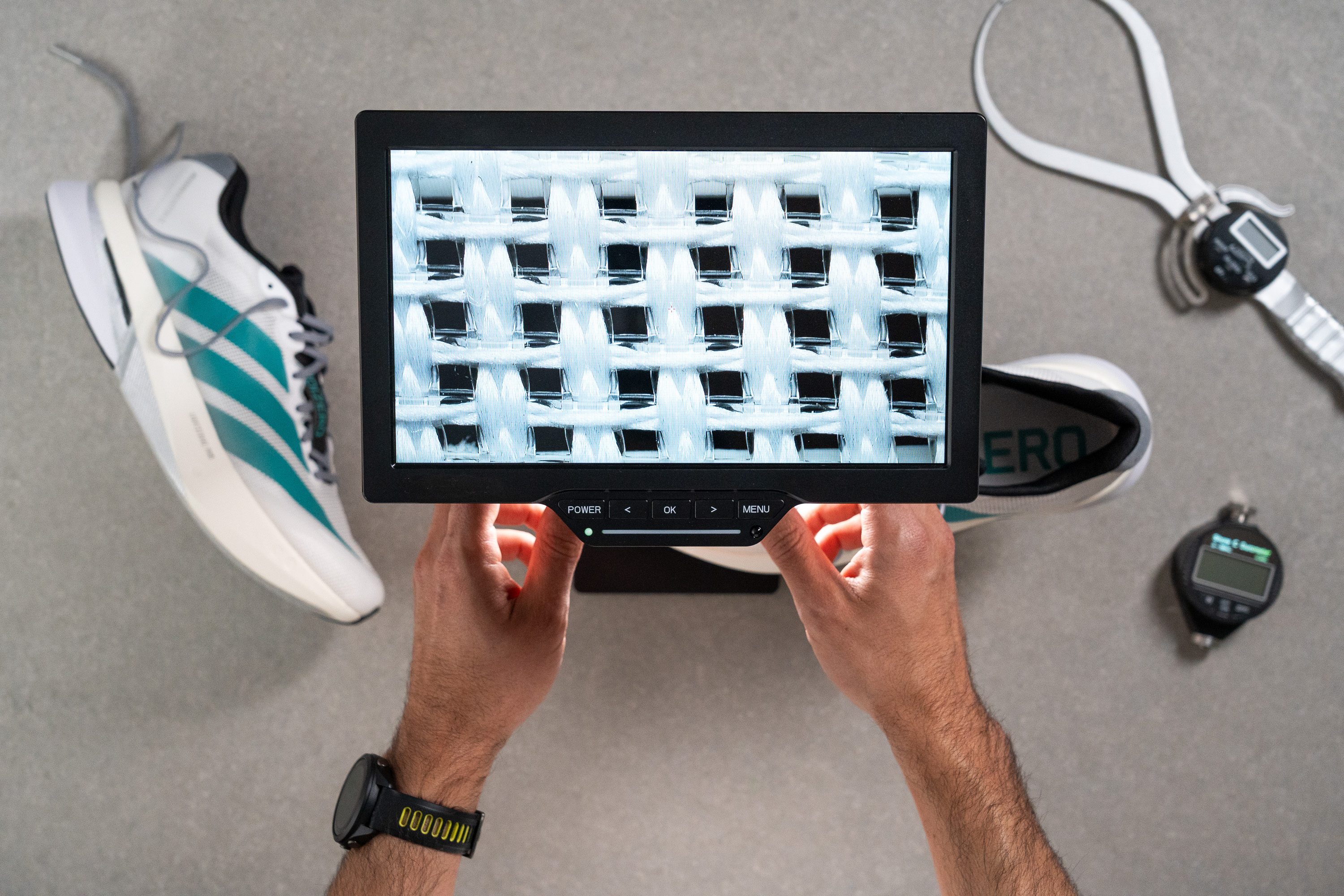
Our microscope gave us the answer.
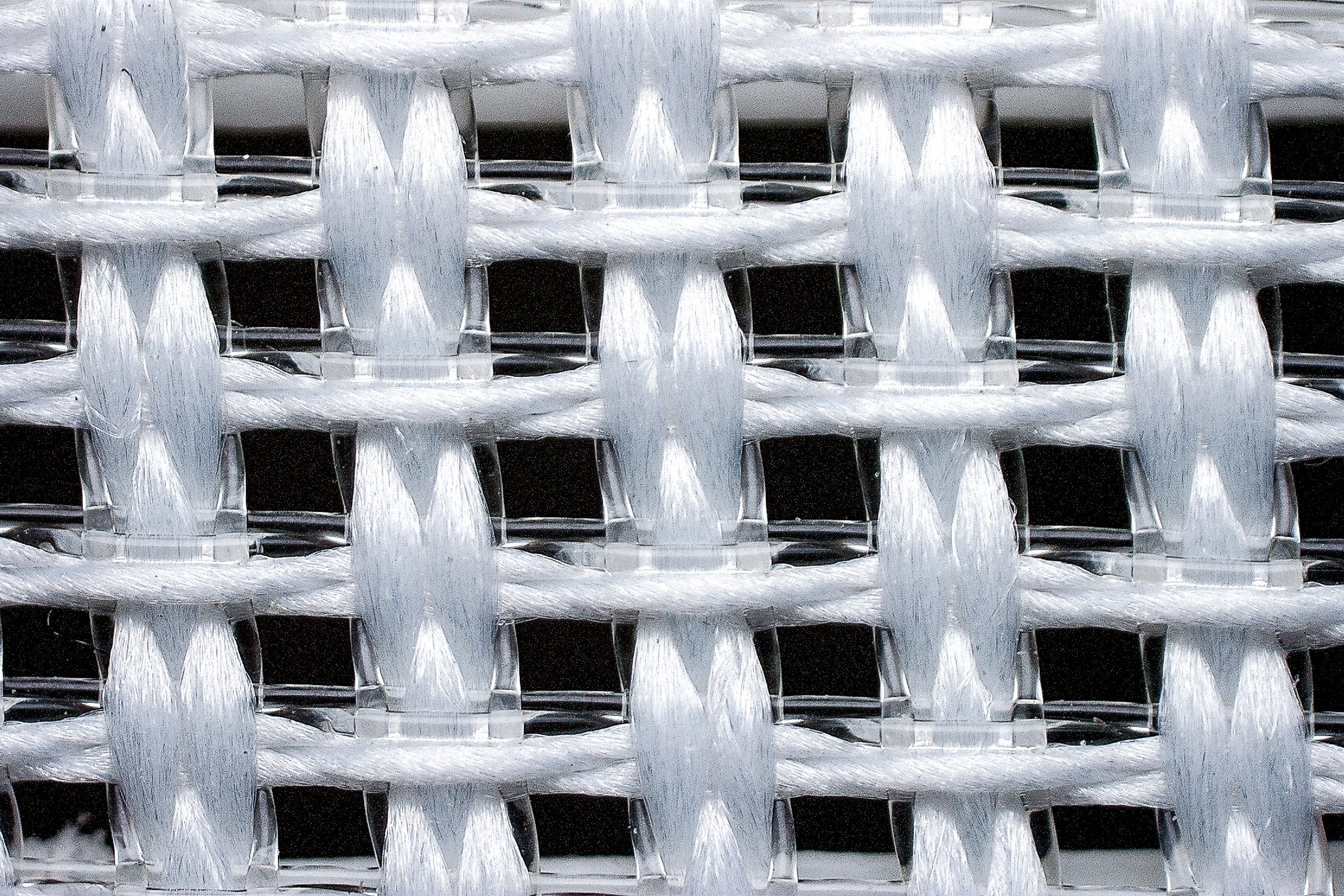
We found a mono-mesh upper made with synthetic threads and translucent TPU fibers—an ultra-thin yet tough combination that promotes airflow without big ventilation holes.
The upper feels rigid and won’t stretch easily. It’s clearly designed with weight-saving in mind—not comfort. That said, we did discover one upgrade: the heel now includes more padding than before, making it a bit more welcoming than the previous version.
| Adizero Boston 13 | 4 |
| Average | 3.7 |
Stability
Lateral stability test
As usual with Adidas shoes, the heel has a noticeable tilt that helps create a more natural pronation path by gently guiding the foot inward after landing.
We also discovered that the firmer bottom layer of foam and the Energy Rods add some extra-stable support, although heel strikers may find it less planted due to the compact rear section.
Torsional rigidity
The carbon Energy Rods in this shoe add a bit of snappiness and help with stability, but they also make it extremely rigid. When we tried twisting the Boston 13 by hand, it barely moved—so we gave it a maximum 5/5 score.
| Adizero Boston 13 | 5 |
| Average | 3.5 |
Heel counter stiffness
One of the biggest changes in this shoe is the heel design—likely a response to feedback from angry runners.
Visually and structurally, Adidas replaced the race-style 1/5 heel counter from its predecessor with a much stiffer one that scored 4/5 in our test, giving the shoe a more training-oriented feel.
| Adizero Boston 13 | 4 |
| Average | 2.9 |
Midsole width - forefoot
The forefoot of the Boston 12 was already wide, but Adidas went even further with the Boston 13, hitting 121.0 mm. That’s on par with many stability shoes and the main reason we recommend it for midfoot and forefoot strikers—this is where this shoe really shines.
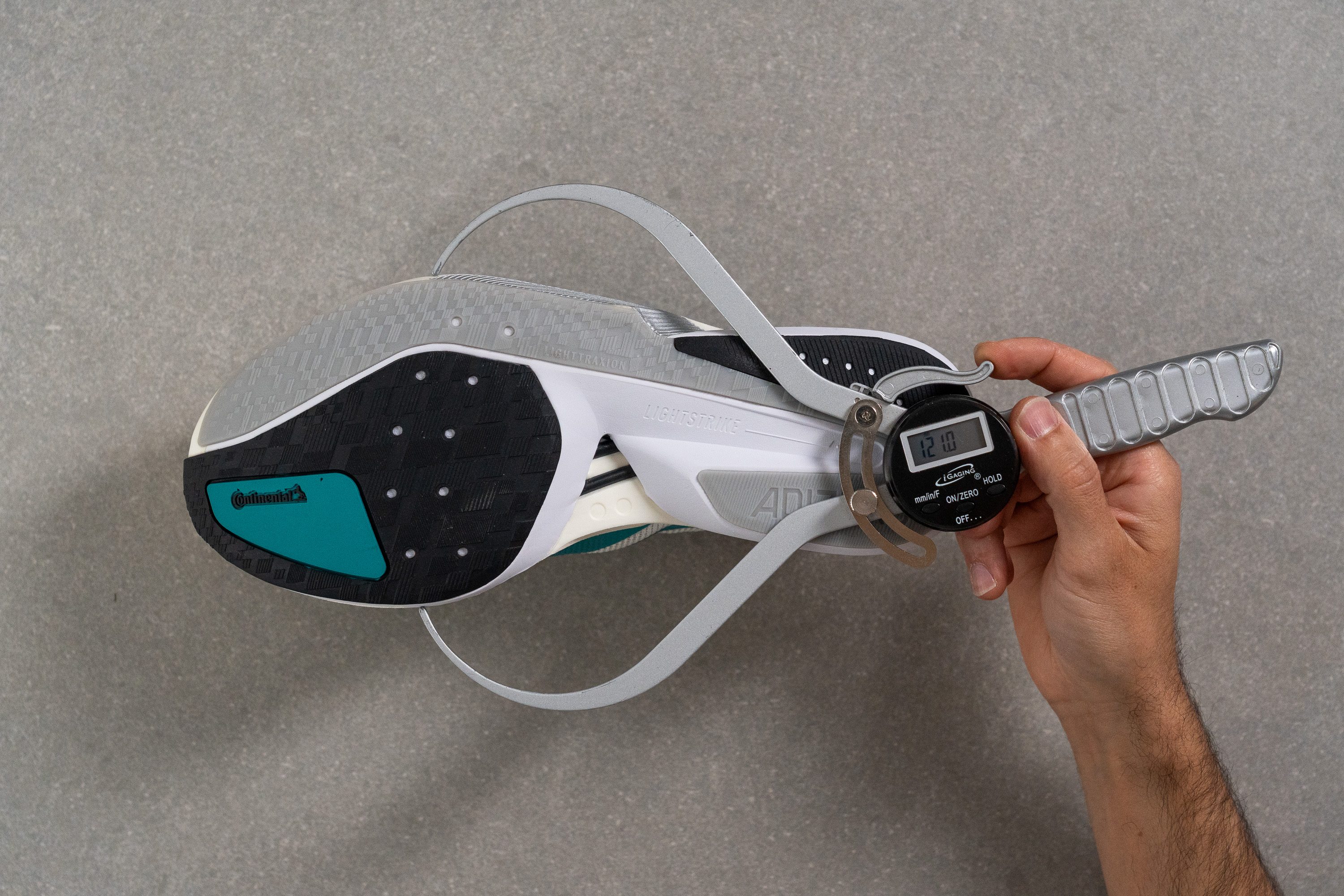
| Adizero Boston 13 | 121.0 mm |
| Average | 114.3 mm |
Midsole width - heel
On the other hand, the heel is quite narrow at 83.8 mm, which is a nod to the Adizero design language. For us, that’s another reason why heel strikers might not enjoy this one as much as other supertrainers.
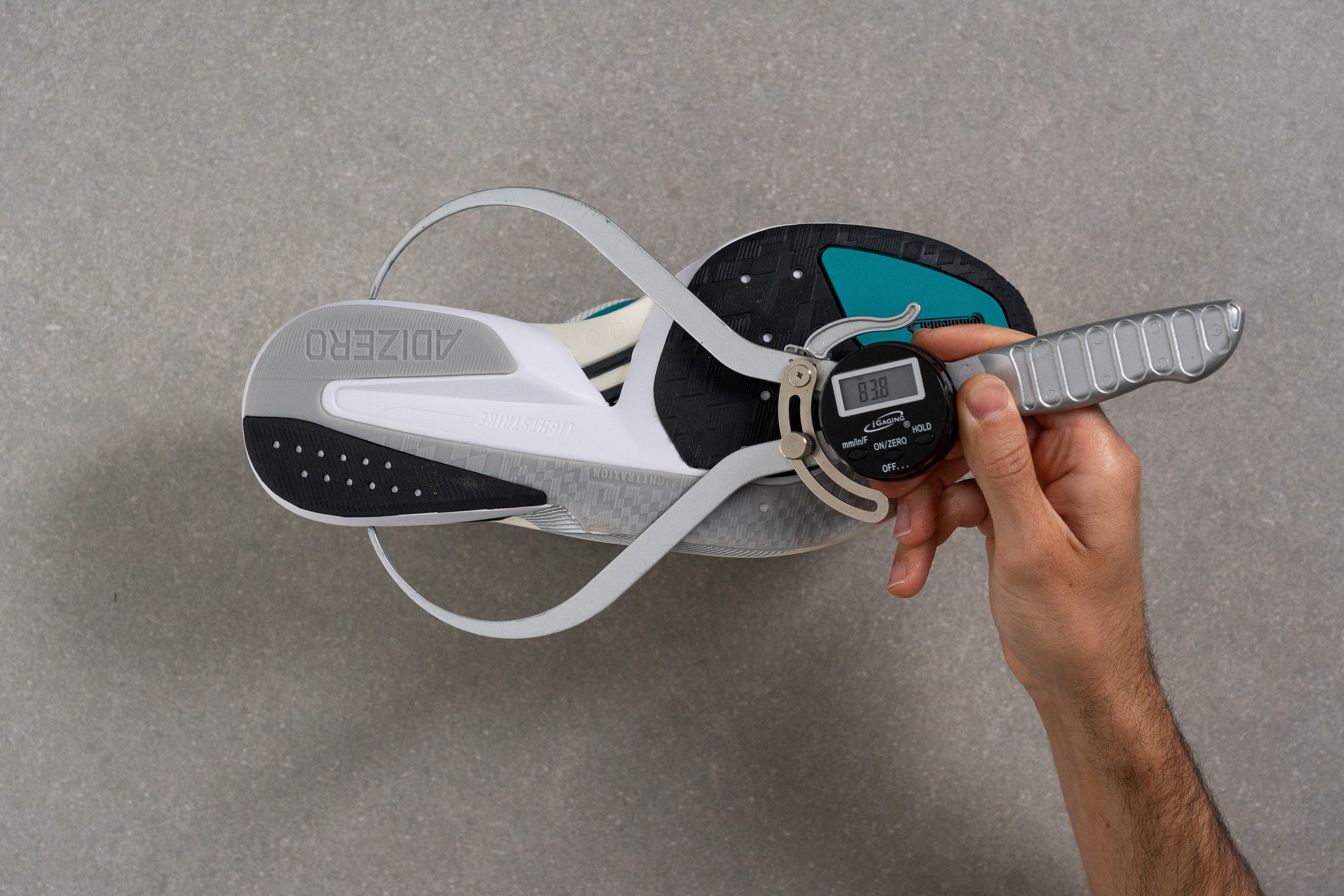
| Adizero Boston 13 | 83.8 mm |
| Average | 90.7 mm |
Durability
Toebox durability
From our experience, durability was bound to be a concern with such a thin upper. And indeed, the Boston 13 landed an underwhelming 2/5 score—not terrible, but far from impressive.
| Adizero Boston 13 | 2 |
| Average | 2.6 |
Heel padding durability
The heel padding has improved in comfort, yet durability didn’t take a hit. It actually held up well with a solid 4 out of 5—so there's no need to worry about wear in this area.
| Adizero Boston 13 | 4 |
| Average | 3.4 |
Outsole durability
Adidas consistently scores among the top in our outsole durability tests, and the Boston 13 followed suit. We measured just 0.5 mm of wear, making this tempo running shoe a clear standout when it comes to outsole longevity.
| Adizero Boston 13 | 0.5 mm |
| Average | 1.1 mm |
Outsole thickness
The Boston 13’s high-end durability gave Adidas the freedom to use a 2.3-mm outsole layer, helping shave off extra weight.

| Adizero Boston 13 | 2.3 mm |
| Average | 3.2 mm |
Misc
Insole thickness
The insole measures 3.3 mm, slightly thinner than average, though the difference is minimal.
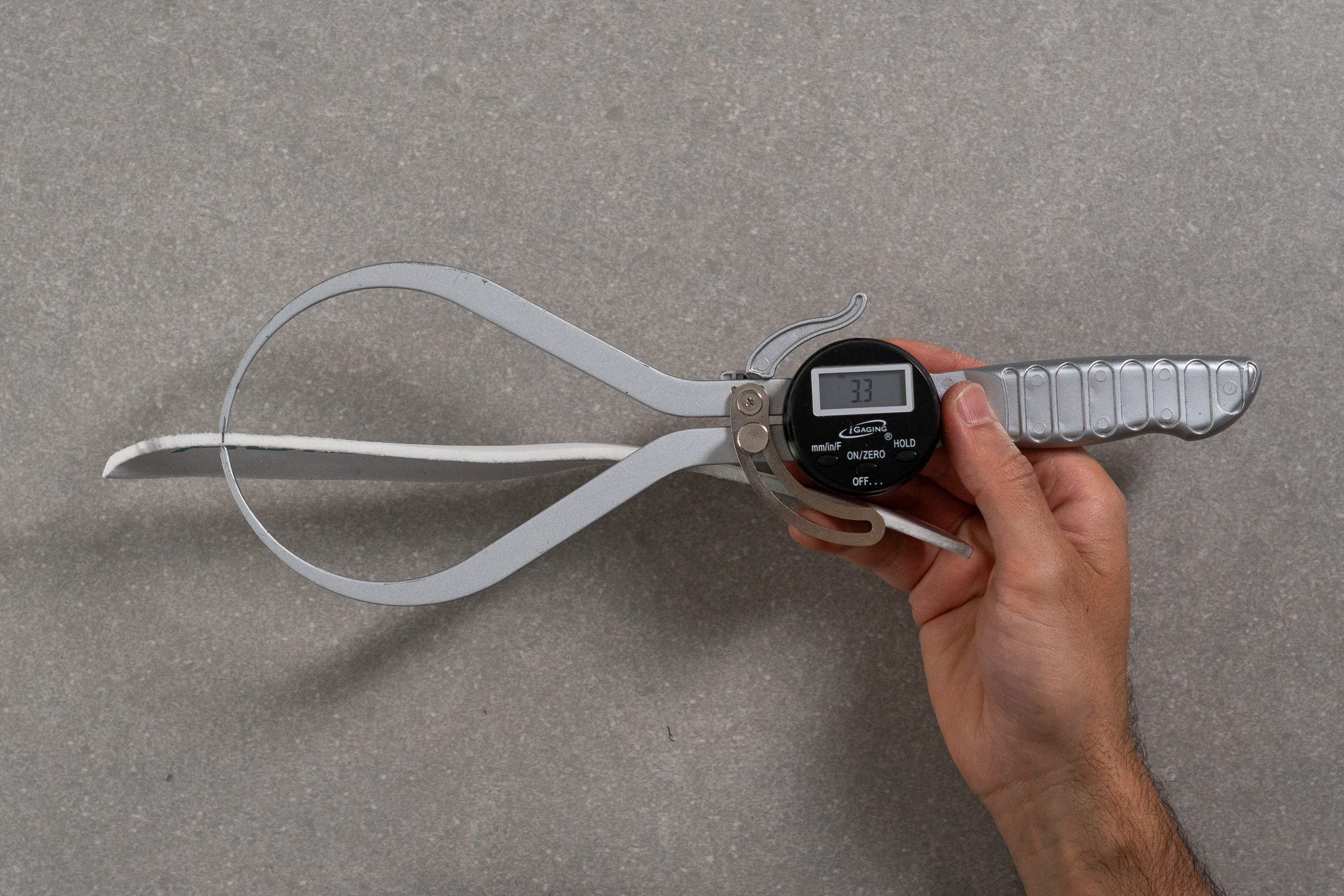
| Adizero Boston 13 | 3.3 mm |
| Average | 4.5 mm |
Removable insole
If you want to adjust the fit of the Boston 13, you can easily swap the insole for a different one.
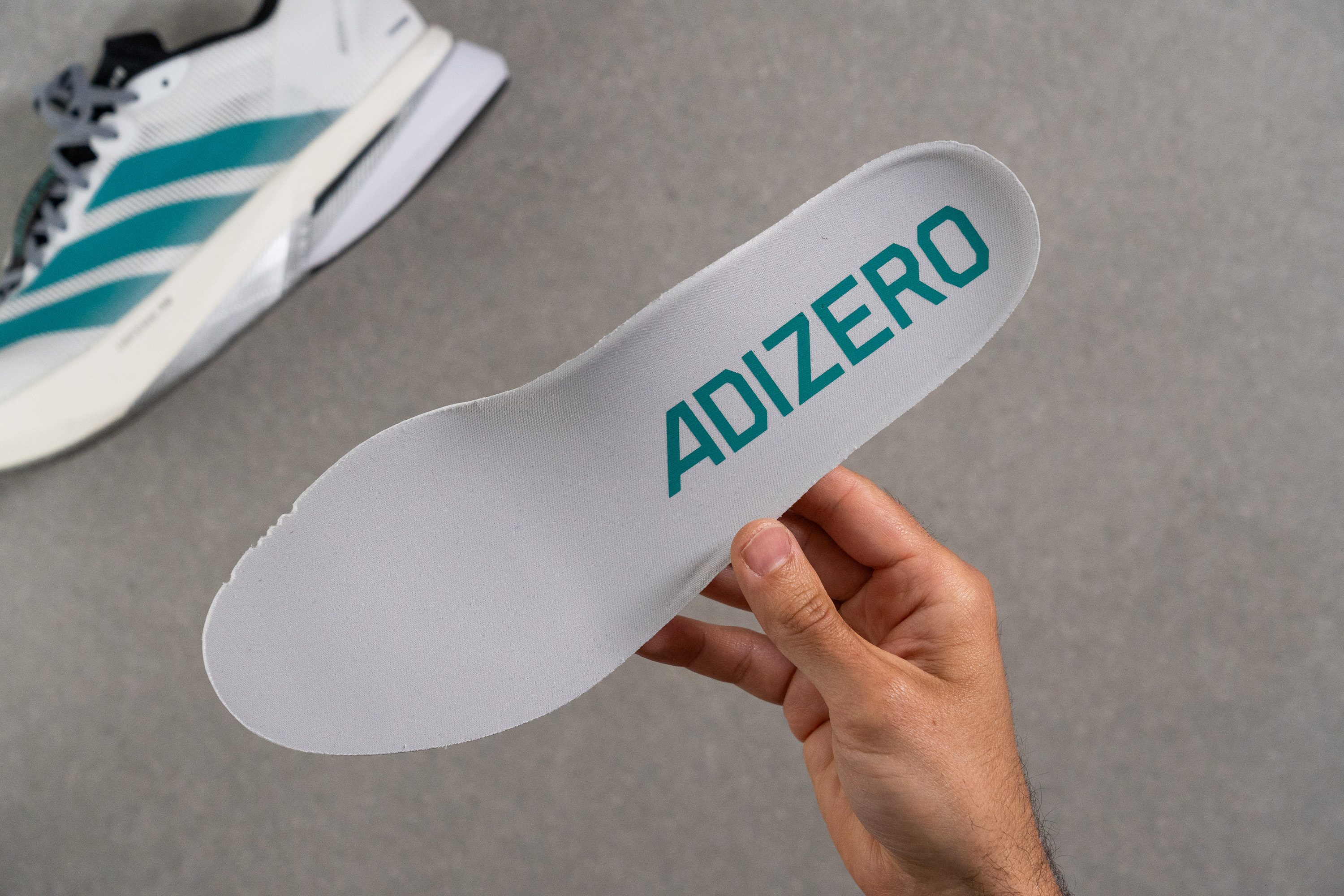
| Adizero Boston 13 | Yes |
Midsole softness in cold (%)
One of the drawbacks of including some EVA foam in the mix is that the Boston 13 turned 30% firmer after 20 minutes in the freezer.
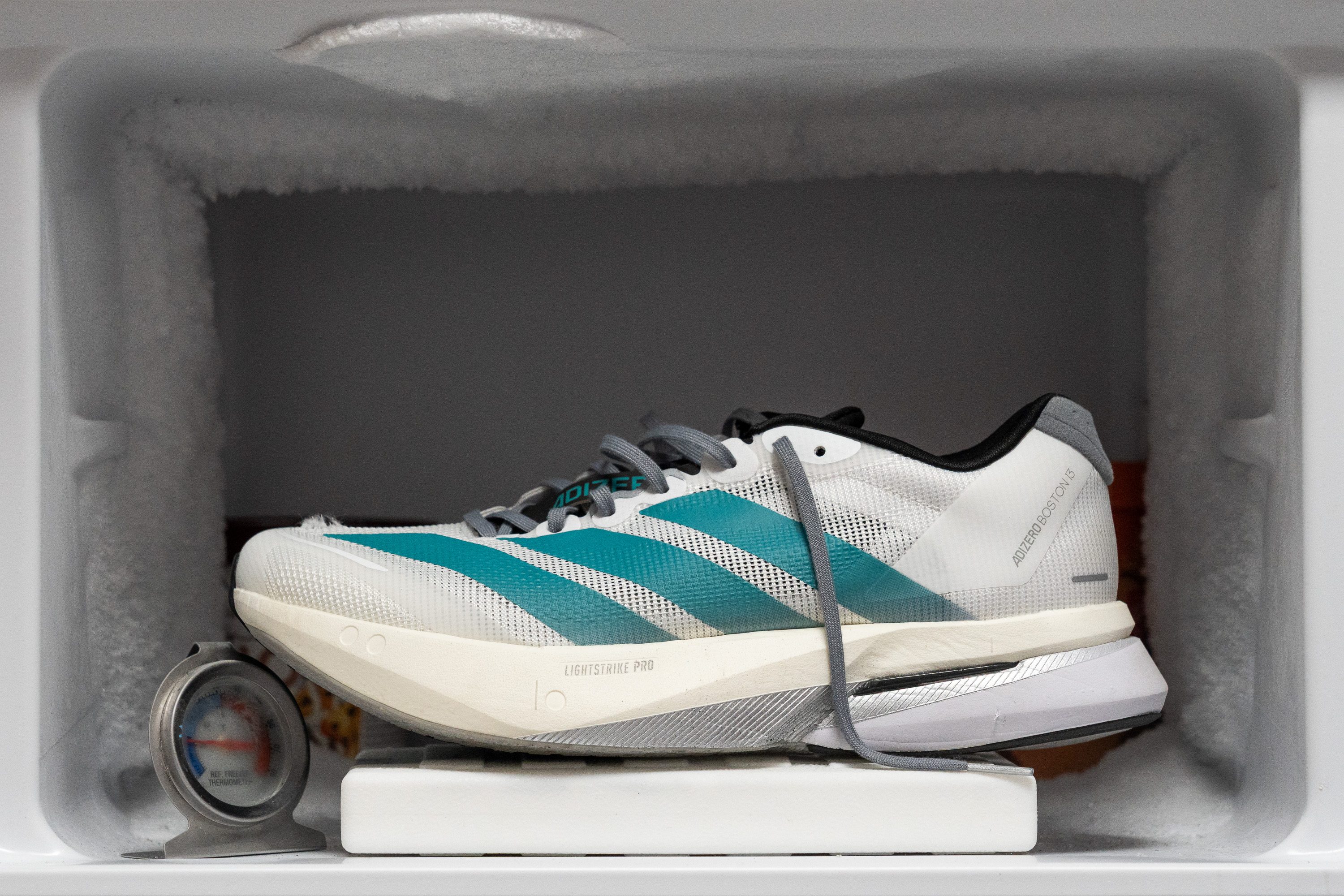
| Adizero Boston 13 | 30% |
| Average | 25% |
Reflective elements
Adidas chose to skip reflective elements on the upper of the Boston 13, and while we always like seeing them, it’s something we’ve come to expect from speed-focused shoes.
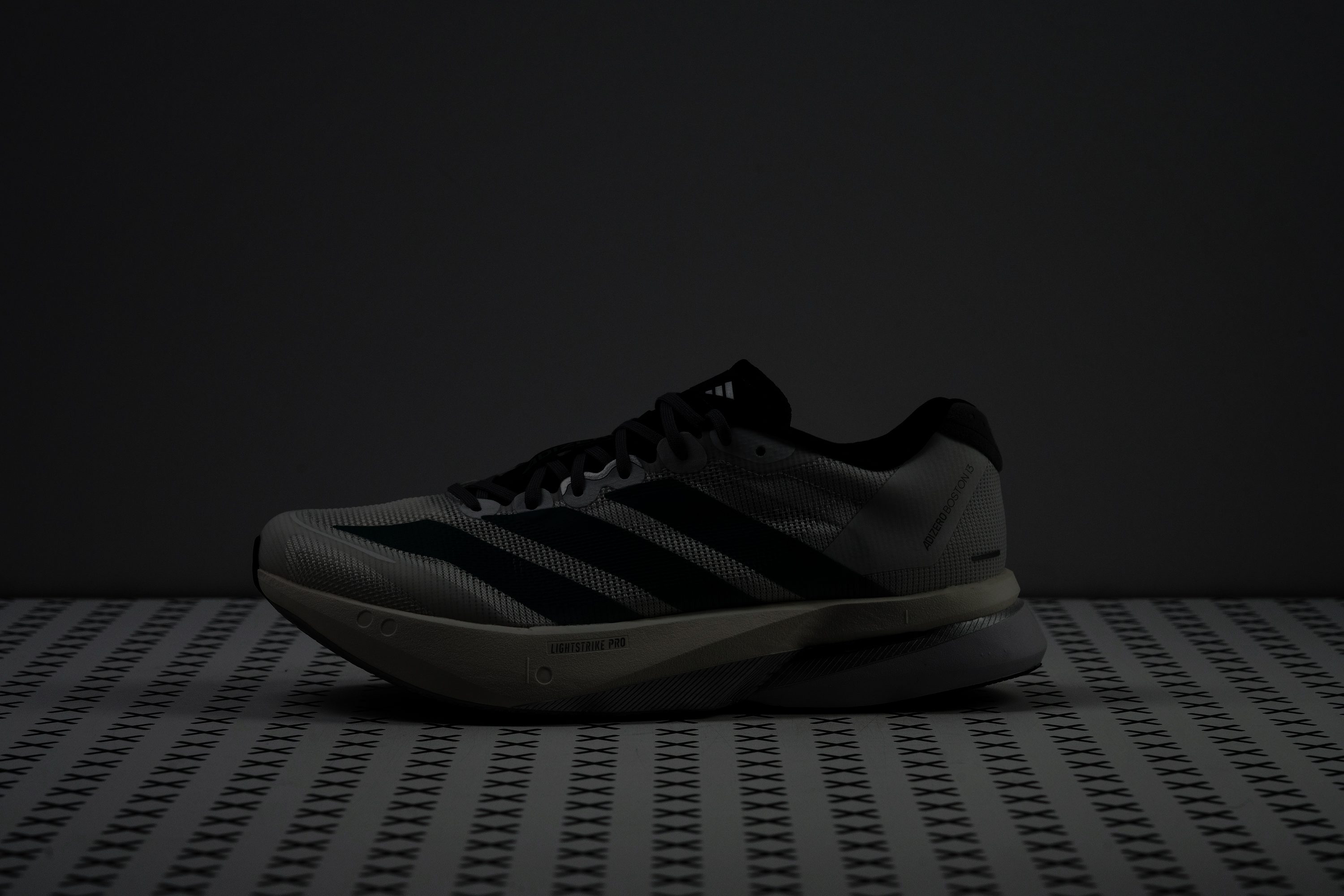
| Adizero Boston 13 | No |
Tongue padding
The lacing system follows the same pattern as recent Adizero models, using reinforced eyelets to prevent early damage—it’s simple yet reliable and allows for some fine-tuning.
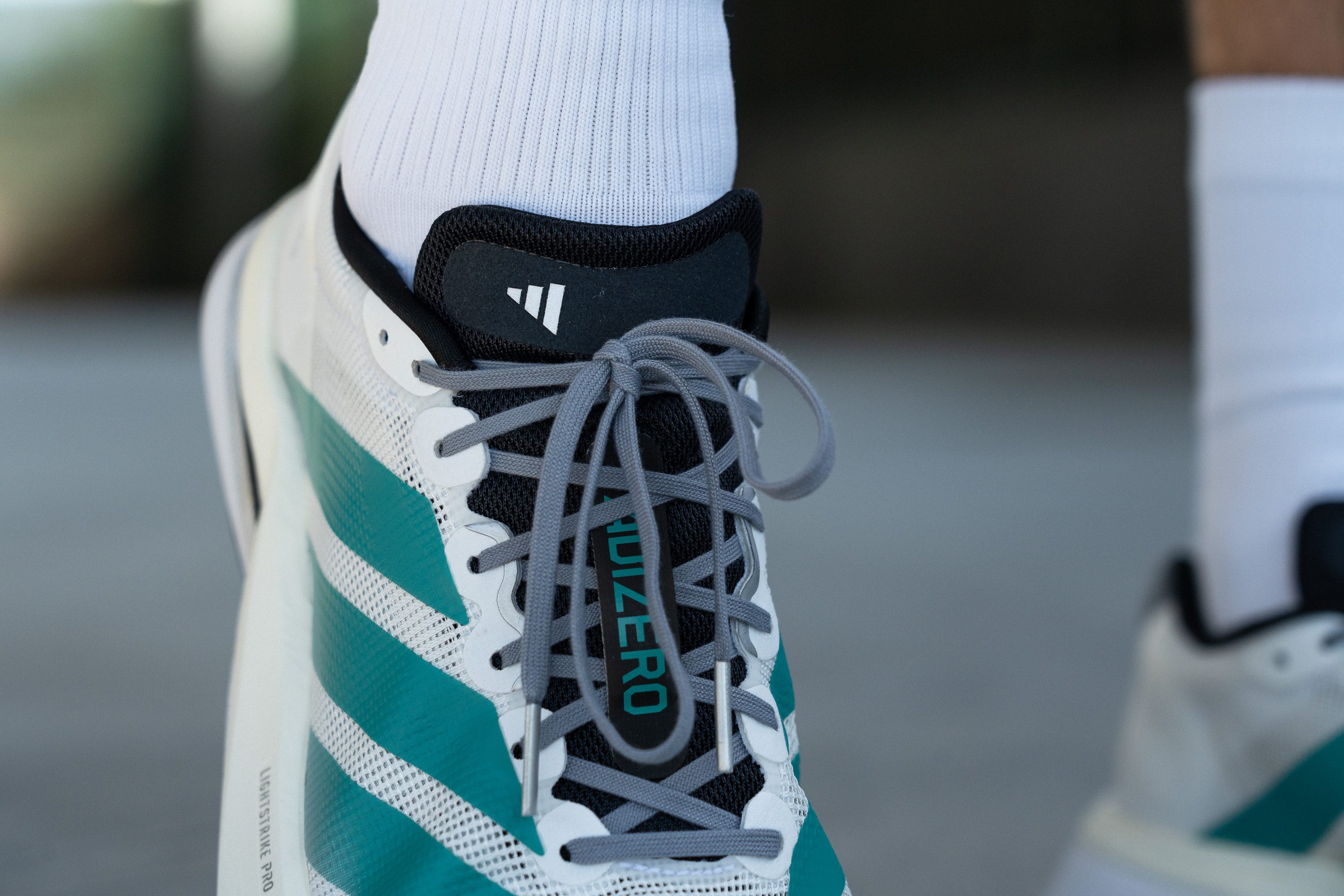
The tongue keeps the same 2.9 mm thickness from the previous version, prioritizing weight savings over plush comfort. From our perspective, that’s a reasonable tradeoff—Adizero means lightning-fast runs and featherlight builds, not super-padded, all-day comfort like a HOKA Clifton 10.
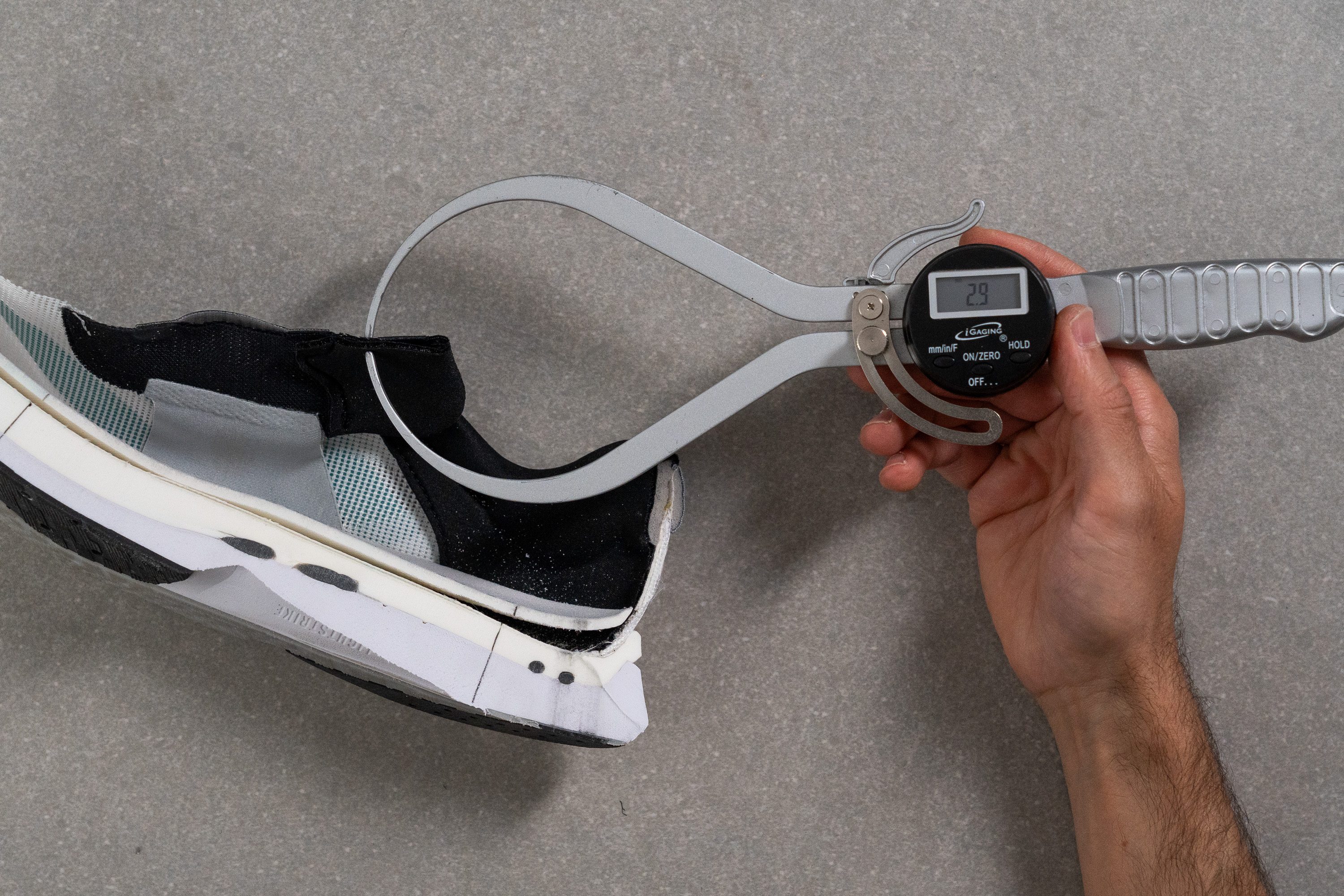
| Adizero Boston 13 | 2.9 mm |
| Average | 5.8 mm |
Tongue: gusset type
One of the biggest letdowns of the Boston 12 was its non-gusseted tongue, but credit to Adidas for listening to the running community. We all wanted a secure-fit, movement-free tongue—and here it is!

| Adizero Boston 13 | Both sides (semi) |
Price
One of the standout features of the Boston 13 is its price-to-performance ratio, and we believe that alone will attract plenty of runners. Few supertrainers offer this mix of speed-ready performance, attractive price, and top outsole durability.
| Adizero Boston 13 | $160 |
| Average | $152 |
Heel tab
After a few years, it seems Adidas is moving away from the flap-style pull tab on some Adizero models. Whether that’s an upgrade or not is up for debate. For us, it looked distinctive and super cool, so it's kind of a miss.

| Adizero Boston 13 | None |






















































